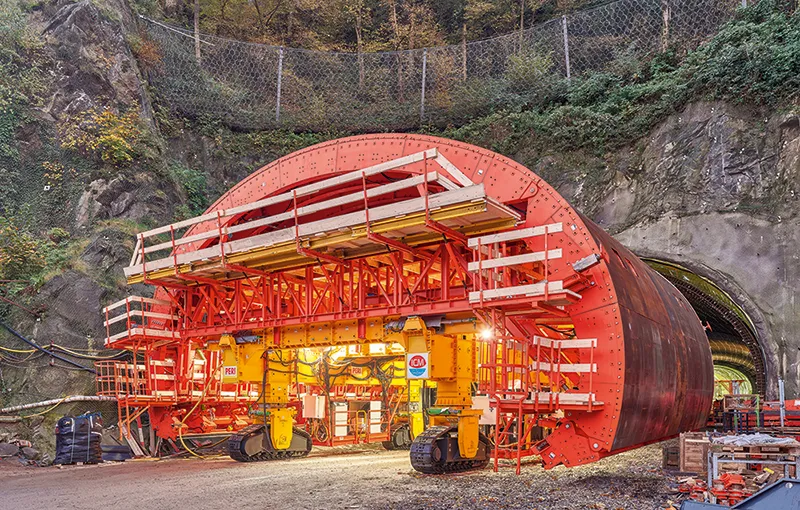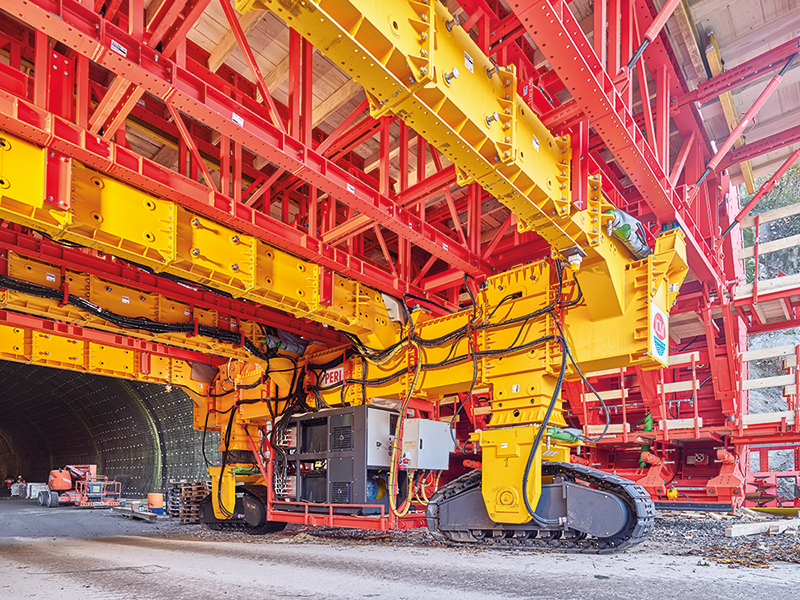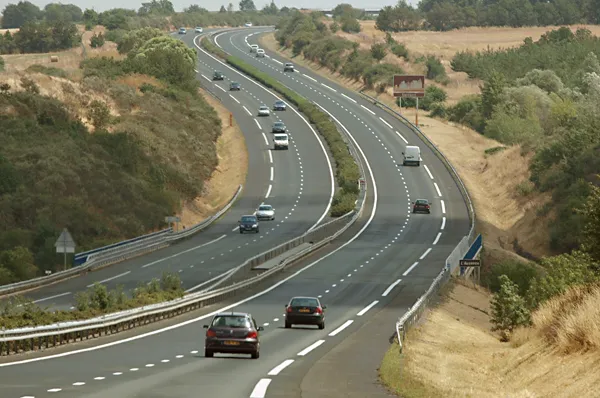
The A26 project is one of the most important infrastructure projects in the Austrian city of Linz and the surrounding area. The key to success during the project implementation stage was a PERI engineering solution that was innovative, safe and efficient, coupled with comprehensive project support. The highlight of the work was that it was Austria’s first fully hydraulic tunnel formwork carriage with a caterpillar drive.
Tunnel construction to the north and south of the Danube River for the access and exit routes for the new Danube bridge has been in progress since May 2020 (see box). A large section of the tunnel runs underground so that the noise and pollution in the urban area are reduced to an even greater extent. Five different tunnel cross-sections, profile transitions, tight radii of between 50m and 750m in the bends and varying gradients were just some of the challenges that had to be overcome when constructing the 1,600m-long access tunnels for the new suspension bridge.
To overcome the challenges, Peri engineers developed Austria’s first customised and fully hydraulic special-purpose steel formwork carriage with caterpillar drive and a weight of 250tonnes. This alone was enough to produce the different cross-sections in a total of 170 concreting sections.

Given the fact that the very tight curve radii made it difficult to transport the formwork carriage, a caterpillar system was used to move it along. In addition, the formwork carriage impressed with its considerable dimensions of 8m in height and 14.5m in length as well as 10.7m in width when ready to move and 11.2m in width when ready to pour concrete.
The formwork carriage was assembled in front of the tunnel entrance under the guidance of a PERI supervisor. A short time later, the first concreting section was successfully completed, meaning that the formwork could be stripped away the very next day and the formwork carriage moved forward to the next concreting section – an efficient and time-saving solution.
Before the tunnel formwork carriage was called upon, a mobile 6m-long assembly carriage with rubber tyres and electric motor was used for the sealing work. This was followed by a reinforcement carriage adapted to the block length of 12m, the principle of which is similar to the sealing carriage. Both carriages consist of a stable VARIOKIT base frame on which a PERI UP scaffold adapted to the cross-sections was erected. This made it possible to convert and relocate the carriages quickly and cost-effectively. What’s more, the erected PERI UP scaffold served as a work platform for site personnel. In the end, the drive was controlled by an integrated hydraulic system.
Engineers from PERI Austria and the PERI Infrastructure Sales Support Unit worked together to develop a project solution that was tailored to all the customer's needs. PERI was intensively involved as early as the planning stage, providing solution-oriented input. When it came to the operational implementation stage, there was constant communication between the parties. This meant that the formwork systems could be used in an optimum fashion on the construction site and that the project was completed on schedule.









